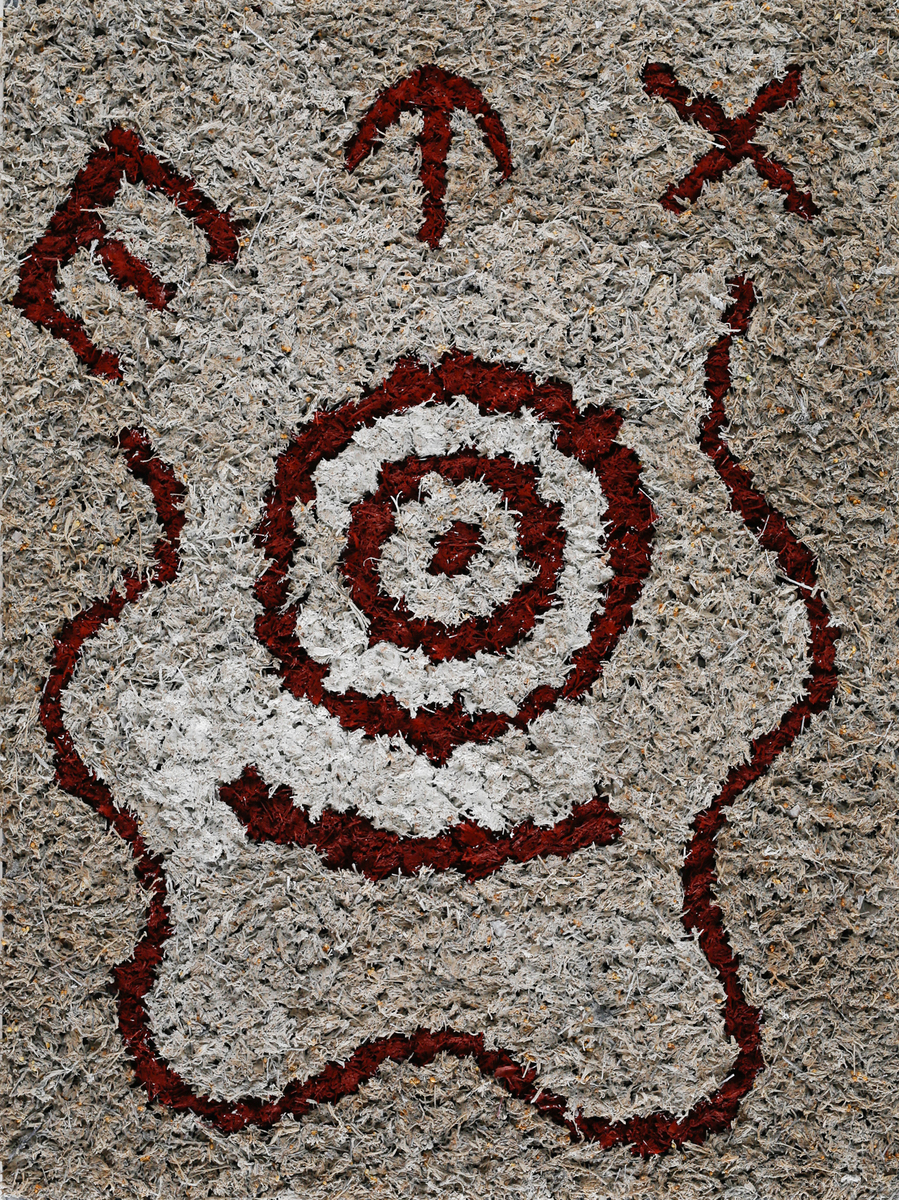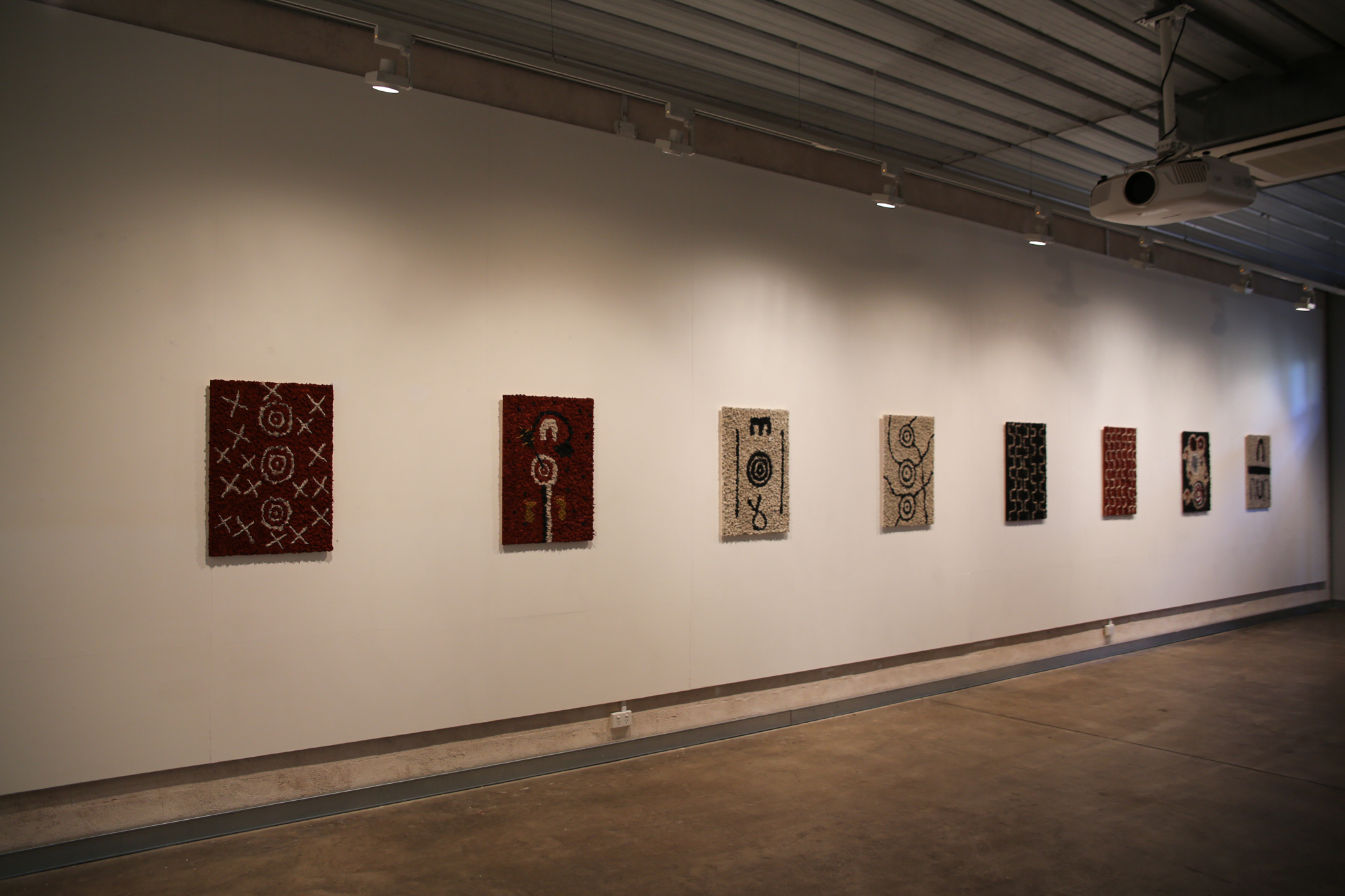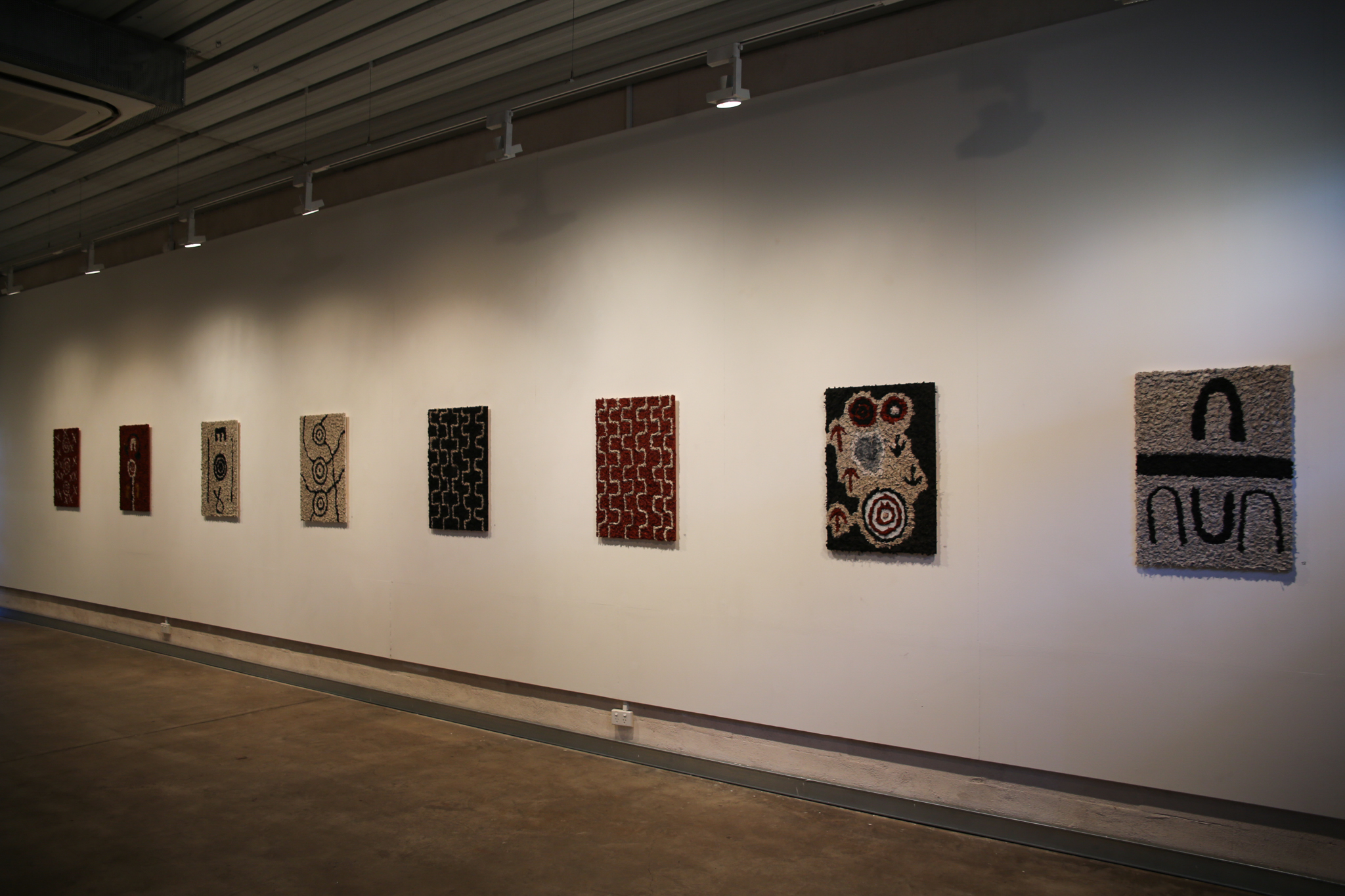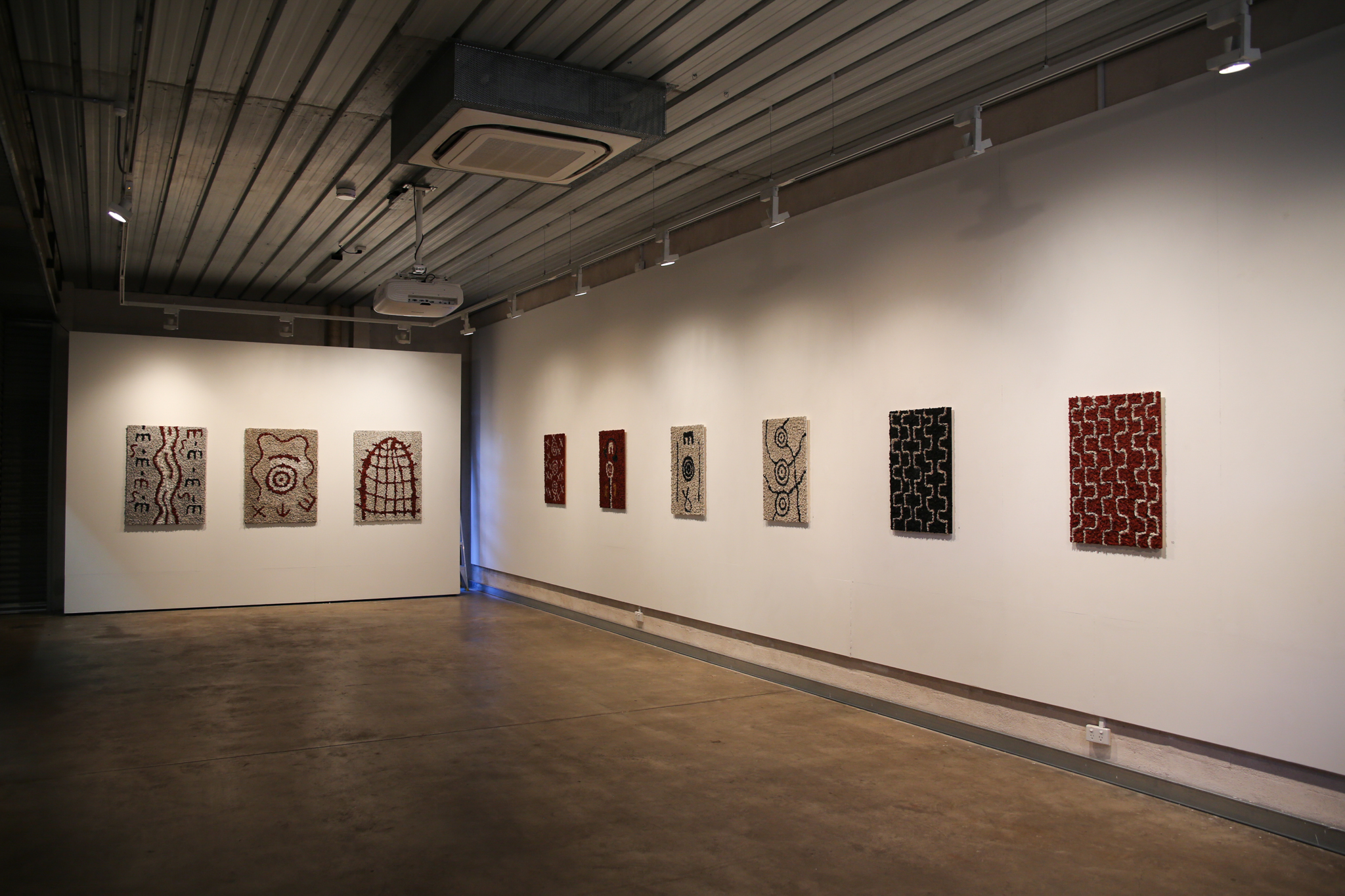Urrempelang Angampekarl Born from Ceremony | anteth anpay-anpay Native Grass Painting
Martin Mbitjana Hagan
24 May
2025
2025
14 Jun
2025
Martin Hagan’s work is born from the ceremonial ground.
Martin is from Laramba, a community excision within Napperby Station - cattle country that is between the well-known art-producing communities at Papunya and Yuendumu. Several of the key founders of Papunya Tula art, including Kaapa Tjampitjinpa, Clifford Possum, Tim Leura and Billy Stockman, grew into manhood at Laramba in the 1930s and worked as stockmen on the station. Despite the fame of the first generation of contemporary Anmatyerr artists, the Laramba community has never had its own art centre. In this absence, Clifford Possum, returning to visit family as a celebrated artist in the 1980sand 90s, became the single, most important influence on the Laramba artists.
Having grown up around senior Anmatyerr men and women, Martin has developed a genuine passion for the cultural knowledge of his elders. His work conveys a deep commitment to Anmatyerr cultural traditions, particularly ceremonial design and performance, and a desire to see its distinctiveness recognised.
The centrality of ceremony to Martin’s labours is evident in his choice of materials. Each board is comprised of chopped common everlasting daisy, known as anteth anpay-anpay in Anmatyerr: a reasonably abundant plant species featuring yellow flowers and grey-green foliage that is regularly used to decorate ceremonial bodies and objects. After being harvested en masse, chopped with an axe and combined with natural pigments, anpay-anpay is transformed into a material that can be affixed to a range of surfaces. Martin’s use of this material, sculpted to render bold ritual iconography, deliberately invites us to imagine the aesthetics of Anmatyerr ceremony.
Martin’s anpay-anpay boards, while uniquely his own and a testament to his creative energies, are also an extension of this cultural maintenance and preservation work. Embedded in each board are unseen layers of intangible cultural knowledge. Most of the boards have associated songs and ceremonies that are performed for them. He follows a time-honoured trajectory - starting from ceremony and then, building on the knowledge he attains in ritual, he conceives and creates new art.
Growing up with the legacy of his grandfather, Clifford Possum, Martin Hagan is cognisant of Laramba’s artistic history. His practice is inspired by the spirit of innovation that led Possum and other Larambamen (Tim Leura and Kaapa Mpetyan/Tjampitjinpa) to develop the desert art movement at Papunya in the early 1970s. Following in their footsteps, Martin draws from the well of ceremonial tradition without being bound by it.
As John Kean has noted “Martin is now at the same age as Clifford Possum when I knew him. His works recall the power of the paintings that Possum created during the mid 1980s, a short phase when the master technician’s compositions were created entirely with dots (see for example Clifford Possum, Mulga Seed Tjukurrpa 1983 Araluen Arts Centre). Martin employs a very similar gesture to create fields of culturally weighty colour. Just as Possum’s brush was loaded with acrylic paint of specific viscosity to create the dot, Martin’s heavily textured fields are created incrementally, the accumulation of numerous pinches of anteth anpay-anpay applied to the surface of a board to build figure and ground. Martin’s repeated gesture connects time and space, linking his current moment with the achievements of his ancestors.”
Like the men who came before him, Martin nurtures local religious and cultural knowledges, not only through the continuation of ceremonial Law but with a careful crafting of new intercultural forms of expression and creative inquiry. Just as the early painters travelled the globe to share their art, Martin and the men of Laramba have also recently contributed ground paintings for the Nothing is Too Beautiful for the Gods exhibition, curated by Jean-Hubert Martin at Fondation Opale, Switzerland.
In this exhibition Martin permits us a window into a cherished yet vulnerable ceremonial life. This is deeply personal for Martin. “I get emotional sometimes when I listen to the old people singing. They always say, ‘You mob gotta carry on now.’” This is a generous body of work that conveys one man’s sense of obligation to, and love for, his cultural inheritance.
Text taken from both John Kean & Jason M. Gibson’s catalogue essays.
Installation View
Artworks











Artist Profile/s
Martin Mbitjana Hagan
Lives
Growing up with the legacy of his grandfather, Papunya Tula artist Clifford Possum Tjapaltjarri, Martin Hagan carries on Anmatyerr traditions through artistic innovations and connection to Country into his body of work.
Martin Hagan is from Laramba in Central Australia and is passionate about cultural preservation and his work is deeply embedded in Anmatyerr cultural traditions. In his practice he makes use of wamulu: yellow desert flowers which are dried and mixed with ochre. Traditionally used in ceremonies and for ground paintings and mosaics, Hagan’s work in corporates wamulu on boards, creating earthy, highly tactile contemporary art pieces. Manyof his designs are from his Possum Dreaming, reflecting his personal connection to Country and Anmatyerr law.
Hagan is part of a significant artistic legacy: he is the grandson of Clifford Possum Tjapaltjarri, one of the founding artists of the Papunya Tula movement in the early 1970s. The Papunya Tula artists, alongside Geoffrey Bardon, were innovators in creating works with acrylics on canvas based on traditional ceremonial body and sand paintings. These founding artists are a guide for Hagan, as he too mixes the traditional with the modern.
The preservation of Anmatyerr storytelling and ceremonial art is incredibly important to Hagan. As a Research Assistant at Deakin University, he coordinates the Ingkantety project, which documents and revitalises Anmatyerr cultural knowledge, including shield-making, song and dance traditions. Ingkantety means to follow in the footsteps of Anmatyerr ancestors to keep their Law going. This project brought together more than 70men to reconnect with cultural practices that have not been widely performed since the 1990s. It resulted in the creation of ceremonial shields, recordings of sacred songs and the documentation of traditional designs, all safeguarded for future generations at the Strehlow Research Centre in Mparntwe/Alice Springs.
His art engages with this rich cultural heritage, ensuring that Anmatyerr traditions are not only preserved but continue to evolve and grow in the future. He is working on a book with Dr Jason Gibson and the Laramba community with the working title Songmen of the 21st Century: Making A Cultural Future for Anmatyerr People.
In 2024 Hagan’s ground painting was included at the Foundation Opale’s (Switzerland) exhibition Nothing Too Beautiful for the Gods, and included in their permanent collection.





